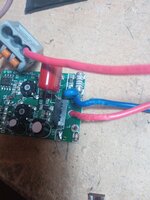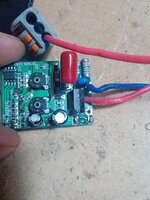VTI_16V
Member level 1
Hello. My friend broght me this board for light that turns on and off automatically... I found that fuse is gone. Nothing is burnt, caps are tested and fine, diodes also... But this thing is unclear to me. I didn't see whole light, but he tells me it is connecting directly to 220V. And on this board I really have markings L and N. But when you track path from L, after the fuse it goes directly to capacitor which is 16V? You can see on the board, cap is just after the fuse, it doesn't make sense to me and I don't want to plug it in... Does anybody know how is this possible, am I missing something obvious? Thanks in advance...


